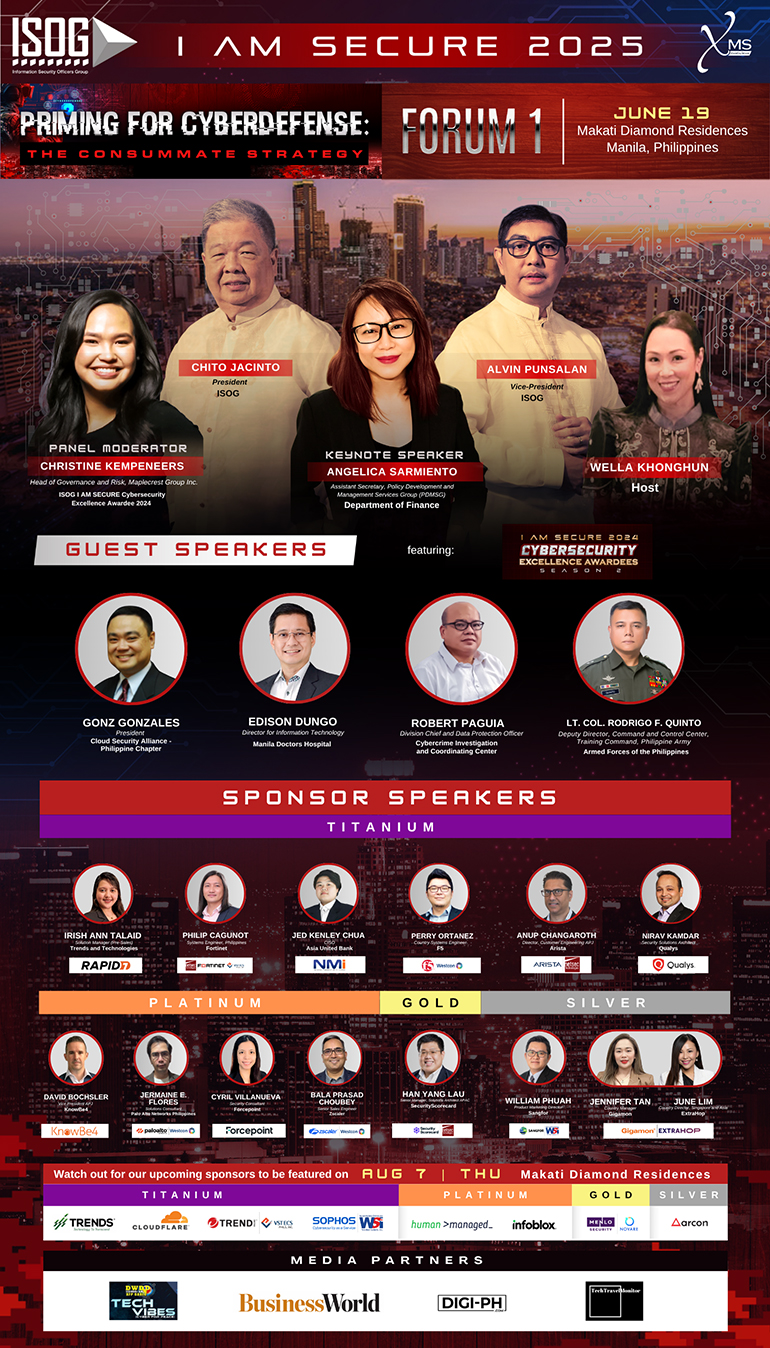
Upgrade to High-Speed Internet for only ₱1499/month!
Enjoy up to 100 Mbps fiber broadband, perfect for browsing, streaming, and gaming.
Visit Suniway.ph to learn
 Filipino-Canadian Nuclear Engineer Matthew Naraine
Filipino-Canadian Nuclear Engineer Matthew NaraineThe Philippines is charging back into the nuclear spotlight, rewriting its energy playbook with further technology diversification in the coming decade. While heating up its power game, the country has also been catching the world’s attention.
That global buzz around nuclear power similarly pulled in young engineer Matthew Naraine, a Project Officer for Advanced Reactor Licensing at the Canadian Nuclear Safety Commission (CNSC). He wasn’t just intrigued by the Philippines’ nuclear ambitions but also by a personal connection to his Filipina mother’s heritage.
“As a Filipino-Canadian, this is both personal and professional—it’s my chance to give back and make a real difference. I started following the global nuclear scene, but seeing the Philippines and much of ASEAN seriously consider nuclear in their energy mix over the past few years really got me interested. It felt like watching my favorite TV show, with new twists every week. Now, it’s more than just interest—it’s a second career, a passion project rooted in purpose. Using what I’ve learned, I intend to help the country where my mother came from,” he narrated.
Canada-Philippines nuclear collaboration
 Filipino-Canadian Nuclear Engineer Matthew Naraine during his visit at the PNRI in February 2025
Filipino-Canadian Nuclear Engineer Matthew Naraine during his visit at the PNRI in February 2025This young engineer’s focus on the Philippines' nuclear power plan is partly underpinned by the ongoing collaboration between Canada and the Philippines. This partnership was reinforced by recent Filipino delegations visiting Canada in 2024 and early 2025 and solidified by the alliance of Ontario Tech University with the Philippine Nuclear Research Institute (PNRI) and the UP College of Engineering. Their goal is to advance education and training for future Filipino nuclear engineers and other professionals—thanks to the relentless efforts of Canadian Embassy officials in Manila who are dedicated to deepening the two countries’ nuclear development partnership.
Canada, renowned for its CANDU reactors and emerging leadership in small modular reactors (SMRs), has been a crucial ally in helping Philippine policymakers, regulators, and industry leaders build the capacity necessary to fuel the country’s nuclear renaissance goal.
Ontario Tech, designated by the International Atomic Energy Agency (IAEA) as a ‘collaborating center’ for advanced nuclear reactors—primarily for SMRs, hybrid nuclear-renewable energy systems, as well as multipurpose applications—likewise plays a pivotal role in shaping the next generation of nuclear professionals critical to the industry’s future. That influence somehow captured the interest of Manila Electric Company (Meralco), which is now partnering with the university on its scholarship program intended to build a skilled workforce of nuclear engineers that will drive the Philippines' nuclear industry forward.
“Connections were made between Ontario Tech and PNRI, and I’m sort of a byproduct of that success story, born from the collaboration of our countries. I’m really trying to advocate that, and we’re off to a great start,” he shared.
Matthew believes that no country can go solo on its nuclear journey—it takes a global network of expertise and the active role of universities to build the foundation and skills needed for a workforce that will also ultimately power the Philippine nuclear sector.
“We go all over the world to gain expertise, but the goal is always to bring it back home. That’s the message I’m conveying to everyone I’m working with, and hopefully, we can pass it on to other Filipinos in the field,” he said.
Like countless other Filipinos working in nuclear facilities worldwide, Matthew enthused, “there’s always that personal connection, and we want Filipinos to take pride in what we’re also building back home.”
Coinciding with a family vacation to Manila last February, this young Filipino-Canadian engineer began connecting with peers at PNRI. It was through these face-to-face encounters that he saw firsthand how the country is pushing forward in its nuclear aspiration—including the target to repower the country’s mothballed Bataan nuclear power facility. That visit similarly sparked a personal realization about where he could step in to broaden collaboration, particularly in helping the Philippines gain traction on ensuring safety in nuclear power projects.
Childhood next to Canada’s oldest nuclear plant
 Filipino-Canadian Nuclear Engineer Matthew Naraine is advancing collaboration with students and nuclear industry professionals at PNRI
Filipino-Canadian Nuclear Engineer Matthew Naraine is advancing collaboration with students and nuclear industry professionals at PNRIMatthew chronicled that his dive into the nuclear engineering field began with pure ‘curiosity,’ having grown up near Ontario’s Pickering nuclear power facility, the world’s oldest operating plant that originally had an installed capacity of 3,100 megawatts.
“Naturally, I got curious, and I ended up studying nuclear engineering at Ontario Tech University. Then I went on to work for the Canadian nuclear regulator to see for myself that these facilities are safe…safety has always been important to me and my family. Now, I review license applications for new technologies being deployed in Canada and globally,” he shared.
Matthew noted that nuclear power holds massive potential, but only if safety comes first. “My job in licensing is like being the family doctor—I assess the big picture, diagnose issues, and work with a team of specialists to bring safety recommendations together. That’s why we need more skilled people to get involved. I focus on the people because technology can’t advance without us.”
He underscored that a true safety culture in nuclear power must be locked in ‘from cradle to grave’—starting with site selection, educating and training the people who'll run the facilities, prudently managing the full lifecycle of plant development, handling waste, then ending with safe decommissioning.
“There will always be concerns about accidents and how to manage the waste, and rightly so. Those are the questions everybody should be asking—especially in countries like the Philippines that are relatively new to nuclear power. My advice to everyone, regardless of what side of the debate you are on, is to be curious, get involved, and get informed to be a part of the conversation. Education is the most powerful tool we have in this,” he stressed.
When it comes to picking a site for a nuclear plant in the Philippines, he qualified that it takes a full team of engineers and geoscientists to get it right—applying hard lessons from disasters like Fukushima to ensure nuclear power is deployed safely and responsibly.
Beyond safety and reliable power, he deemed that winning public trust in nuclear means putting communities in the driver’s seat—creating jobs, building careers, and proving the project works for them, not just around them.
Cascading impact of giving back
After nearly 10 years in the nuclear industry, Matthew’s next mission is clear: “to be a mentor to the next generation of nuclear engineers to serve as inspiration to Filipinos as a way of giving back.”
He recognized that “getting started is always the toughest part—whether it’s learning an instrument or training as an athlete.” In his view, what separates the good from the great is patience, discipline, and finding the right mentors to shape you into a sharp, well-rounded engineer.
Now, as the Philippines steps into the nuclear revival era, the country faces a defining choice. “We can choose to be a part of the solution and overcome fear by embracing the challenge,” he noted. And to him, that’s where the real excitement begins.
He sees a glimmer of hope, pointing out that the Philippines is making solid strides—prioritizing education to train nuclear safety experts, laying the groundwork for an independent regulator, and earning initial positive feedback from the IAEA on its progress in developing a policy framework for radioactive waste management. Plus, the push for the PhilAtom regulatory body shows the country’s serious commitment to setting the safety bar high for nuclear operations.
He is obviously fired up about the future, but he knows the hard truth that none of it matters unless we first address the dilemmas staring us down right now. “There are so many people without food and electricity, and for the ones that do, the bills are crippling. I hope nuclear can make life more affordable and put an end to poverty,” he said.
While nuclear is still relatively stuck in the ‘boring box’ to many, especially with the hype around AI and space exploration, this young Filipino-Canadian engineer is hoping to flip the script—wishing that by sharing his story and passion, he’ll ignite enthusiasm among Filipino collaborators and other future leaders to really see nuclear as the powerhouse career that it truly is.

 1 month ago
11
1 month ago
11



